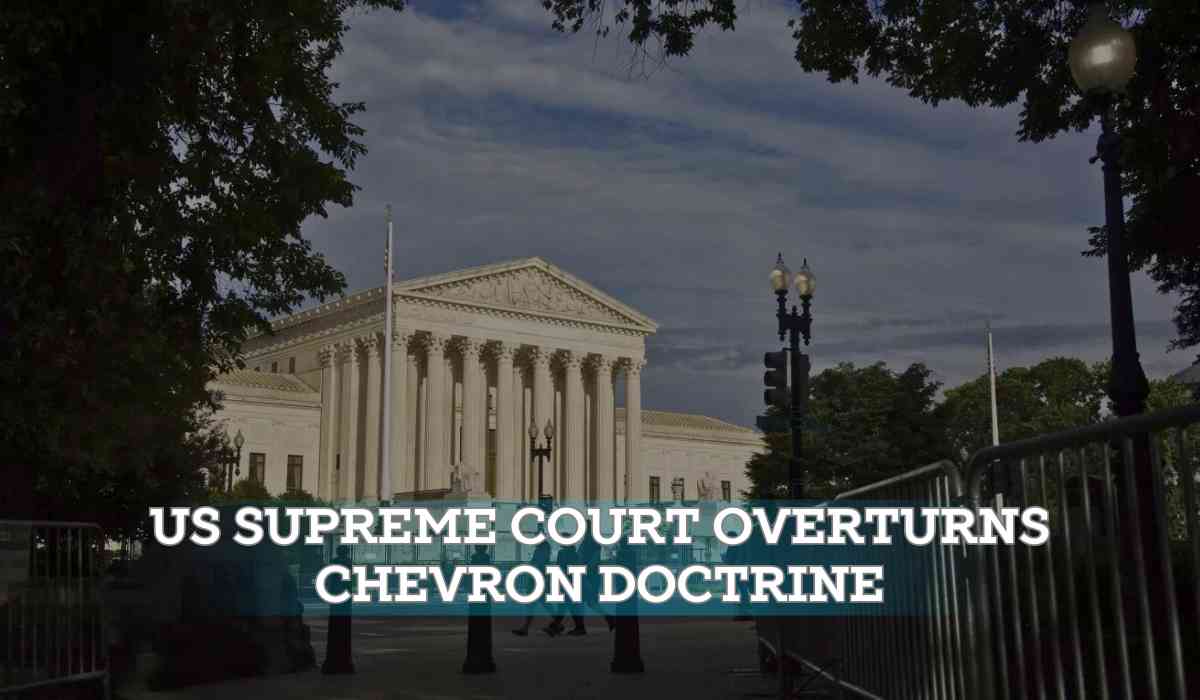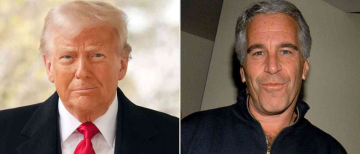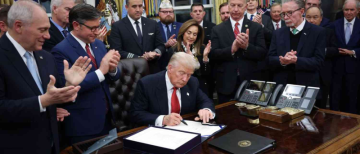The Supreme Court's recent ruling curtails the power of federal agencies, affecting climate and wildlife regulations. The 6-3 decision, authored by Chief Justice John Roberts, overturns the Chevron doctrine, which allowed courts to defer to agencies' interpretations of ambiguous laws.
This ruling could impede regulatory efforts across various sectors, signalling a significant shift in administrative law.
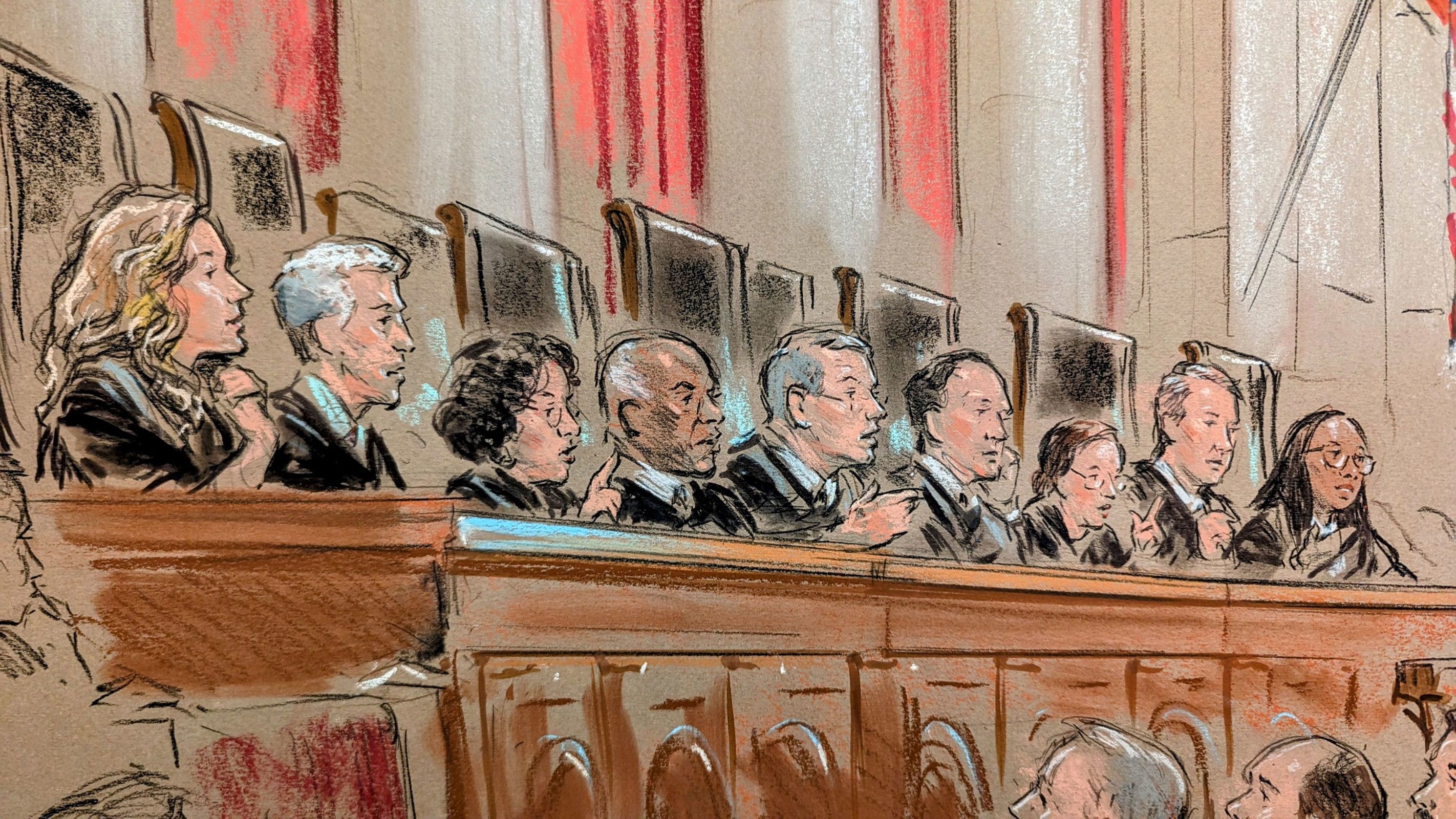
Chevron Doctrine: Background and Significance
The Chevron doctrine, established in 1984, allowed courts to defer to federal agencies' interpretations of ambiguous laws, significantly empowering these agencies in their regulation-making. Over the past 40 years, this doctrine has been instrumental in upholding thousands of regulations, providing a legal framework for agencies like the Environmental Protection Agency (EPA) to interpret and implement complex statutes.
David Doniger, a senior attorney at the Natural Resources Defense Council (NRDC), emphasised that
"Chevron was a cornerstone of modern administrative law, allowing agencies to fill in the gaps of legislation where Congress was silent or ambiguous."
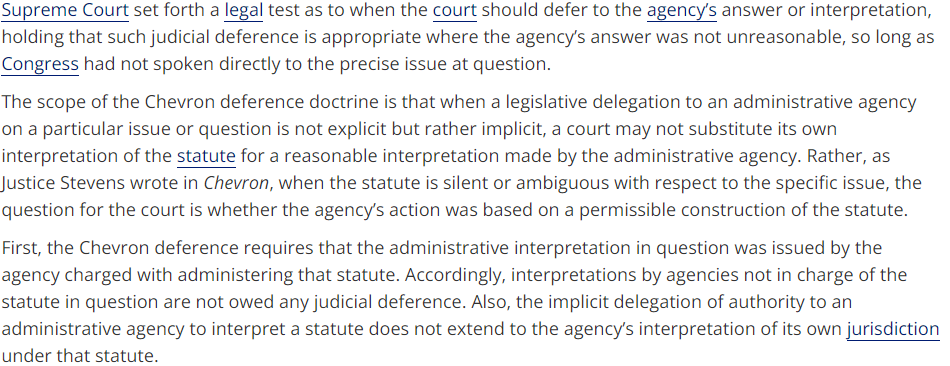
MC: Cornell Law School
Supreme Court Rulings: Key Cases and Decisions
The Supreme Court's ruling on cases like Loper Bright Enterprises v. Raimondo and Relentless, Inc. v. Department of Commerce struck down a federal rule requiring the herring industry to cover observer costs, deeming it overly burdensome. The lower courts had previously upheld the rule, finding it reasonable under federal law.
Chief Justice Roberts argued that "courts, not agencies, should be the final arbiters of statutory interpretation," emphasising the judiciary's role in limiting administrative overreach.
Impact on Environmental Protection
# Climate Change
David Doniger from NRDC highlighted potential hindrances for agencies in addressing modern challenges like climate change. The ruling may prevent using older laws to tackle new environmental issues. "Without Chevron, we risk paralysing our ability to respond to urgent environmental crises," said Doniger. The EPA has used Chevron deference to enforce regulations under the Clean Air Act, including rules aimed at reducing greenhouse gas emissions by 30% by 2030.
_1719649050.png)
Timeline of the Clean Air Act and updates over time:
- 1955: First federal air pollution law funds research (Air Pollution Control Act).
- 1963 & 1967: Early Clean Air Acts focus on research and state control.
- 1970: The Landmark Clean Air Act sets national standards, creates EPA, and requires state action plans.
- 1977: Amendments strengthen regulations, target clean air protection, and tighten car emission controls.
- 1990: Major revision introduces market programs, ozone protection, and streamlined toxic air pollutant controls.
- 2022: Inflation Reduction Act confirms EPA's authority to regulate greenhouse gases.
# Endangered Species
The ruling could change how courts defer to agencies in protecting vulnerable species. Damien Schiff from the Pacific Legal Foundation suggested the ruling might restrict how agencies like the U.S. Fish and Wildlife Service protect endangered species. "This decision demands a more precise legislative mandate to justify broad regulatory actions," Schiff remarked.
# Toxic Chemicals
Regulations on toxic chemicals are likely to remain unaffected since the EPA's assessments are based on scientific studies rather than ambiguous statutes. Jennifer Sass, a senior scientist at NRDC, pointed out, "Most of our chemical safety laws are clear enough that this ruling might not disrupt current regulatory practices."

Support and opposition
# Support
Conservative groups and business interests, notably those backed by Charles Koch, opposed Chevron, arguing it gave too much power to agencies. Challenges to the doctrine were spearheaded by Koch network-funded organisations such as the Cause of Action Institute and the New Civil Liberties Alliance. Michael P. Farris, president of the Alliance Defending Freedom, stated, "For too long, Chevron has allowed unelected bureaucrats to wield unchecked power."
_1719649196.jpg)
Plumes of steam rise above the Pine Bend oil refinery in Rosemount, Minnesota, run by Flint Hills Resources, a subsidiary of Koch Industries.
# Opposition
Environmental groups such as the NRDC and the Environmental Defense Fund (EDF) defended Chevron, emphasising its role in effective regulation. A wide range of other groups, including Democratic senators, the American Cancer Society, and the Lawyers’ Committee for Civil Rights Under Law, also supported retaining the doctrine. Senator Sheldon Whitehouse stated, "This decision undermines decades of regulatory stability and public health protections."

Future Implications
# Legal Challenges
An increase in lawsuits challenging federal agency actions is anticipated, extending beyond environmental regulations to include departments like education, labour, and health and human services. Craig Green, a law professor at Temple University, predicts, "We will see a surge in litigation as industries seek to challenge regulatory interpretations across the board."
# Regulatory Oversight
Republican lawmakers may heighten oversight of the Biden administration's rules. The House Republican Study Committee's memo suggests this ruling could facilitate rolling back what they describe as the Biden administration's "woke and weaponized administrative agenda."
# Federal Agency Authority
The power shift towards federal judges having the final say on statute meanings, will impact agencies' regulatory actions. This shift could complicate efforts to address significant issues like public health, workplace safety, and environmental protection. "The judiciary's increased role will lead to more fragmented and inconsistent regulatory outcomes," Green warned.
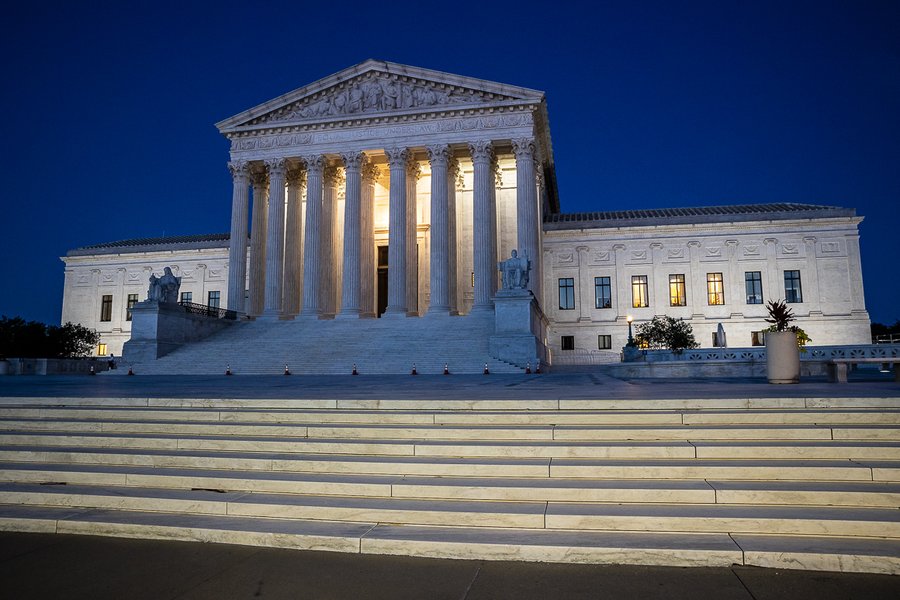
Detailed Analysis and Implications
# Climate Regulations
Despite the ruling, the Inflation Reduction Act empowers the EPA to regulate greenhouse gases by defining them as air pollutants under the Clean Air Act. This could mitigate some of the negative impacts of the ruling on climate change regulations. However, without Chevron deference, each regulatory action may face heightened scrutiny and potential judicial invalidation.
# Endangered Species Protection
The ruling could alter how courts handle protections for vulnerable plants and animals, previously deferring to the U.S. Fish and Wildlife Service’s interpretation of the Endangered Species Act. This change may complicate efforts to safeguard endangered species. Studies show that agency expertise is crucial in interpreting complex environmental data, and this ruling might undermine such expertise.

# Regulatory Authority
The shift in power from executive agencies to the judiciary could lead to more legal battles and a slower regulatory process. This change is expected to "gum up the works" for federal agencies, making it harder to address critical issues, as noted by Jody Freeman from Harvard Law School. Freeman highlighted that "the increased judicial oversight will create significant delays and uncertainty in the regulatory process."
# Broader Impact
The ruling could impact a wide range of regulations, including those related to public health, workplace safety, and environmental protection. That could lead to an increase in lawsuits, which could weaken environmental and public health safeguards.Critics argue this aligns with a broader conservative agenda to reduce the federal government's regulatory power. A 2021 study by the Brookings Institution found that Chevron deference has been pivotal in upholding health and safety regulations, and its removal could lead to less stringent protections.
# International Comparisons
The U.S. stands out for its significant judicial deference to administrative agencies, which is less pronounced in other countries. In the European Union, for example, regulatory agencies operate under more direct supervision from the legislative bodies, and courts often engage in a more rigorous review process. This shift in the U.S. may bring its administrative law closer to international practices, but it also risks reducing the effectiveness of its regulatory frameworks.
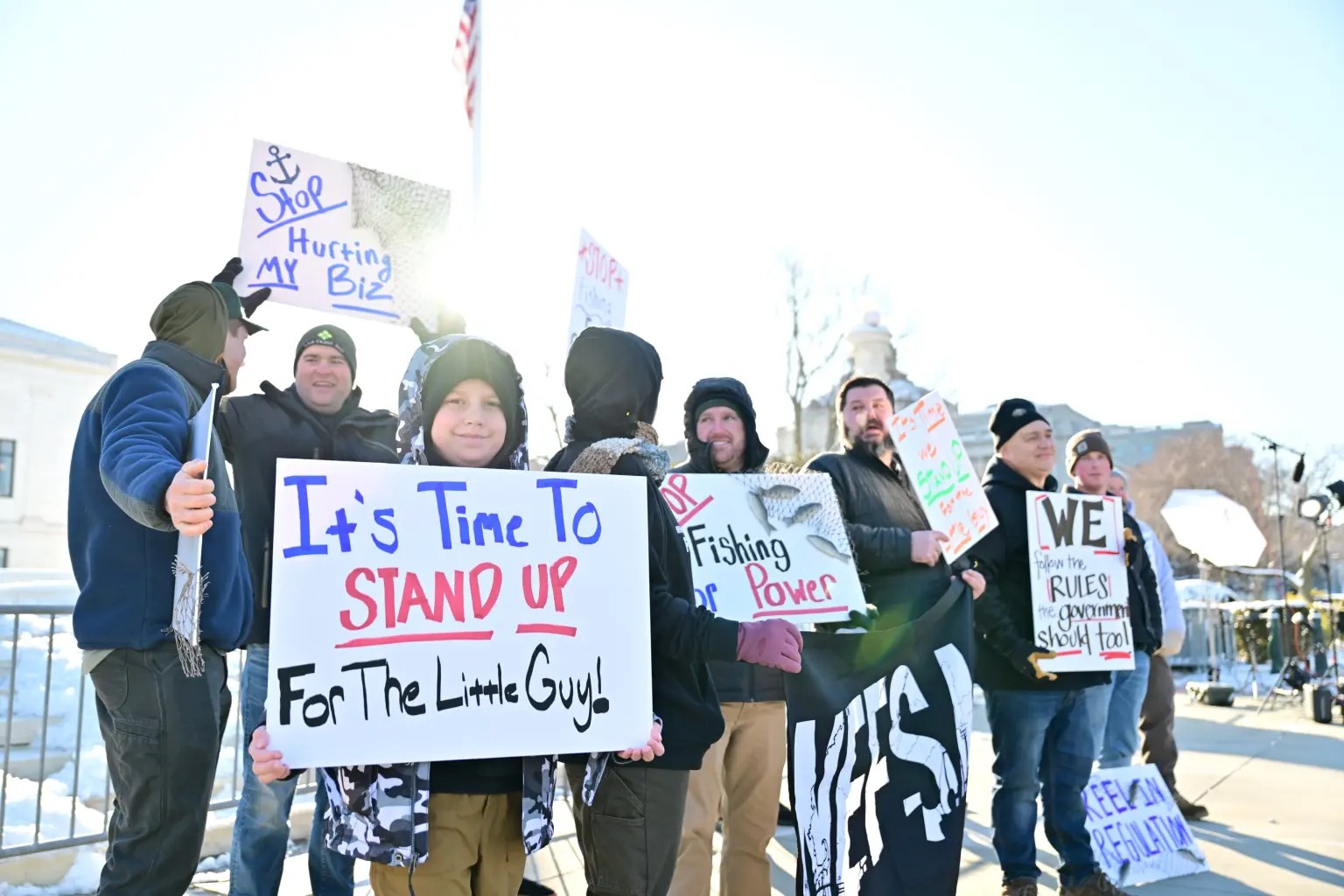
Potential Legislative Responses
Congress may respond by drafting more precise laws to minimise ambiguities, thus reducing the need for agency interpretation. Legislative efforts could focus on clarifying statutory language, thereby ensuring that regulatory agencies have clear mandates to act upon. As Senator Elizabeth Warren suggested, "Congress must step up to fill the gaps left by this ruling to ensure that vital protections remain in place."
# Timeline of Key Events
- 1984: Chevron U.S.A., Inc. v. Natural Resources Defense Council, Inc. establishes the Chevron doctrine.
- 1992–2020: Chevron deference is invoked in numerous cases, supporting various regulations.
- 2023: The Supreme Court hears Loper Bright Enterprises v. Raimondo.
- 2024: The Supreme Court rules 6-3 to overturn Chevron.
Workarounds for Agencies
Agencies might adapt by providing more detailed justifications for their regulations, relying on clear statutory mandates and extensive public records to support their interpretations. They may also engage more actively with Congress to ensure legislative clarity and seek alternative legal bases for their actions. For example, the EPA could leverage specific provisions of the Clean Air Act that explicitly grant it regulatory authority over certain pollutants.
# Case Studies
♦ Clean Power Plan (2015): The EPA's plan to reduce carbon emissions relied heavily on Chevron deference. Without it, the plan faced numerous legal challenges, ultimately leading to its suspension.
♦ Waters of the United States Rule (2015): This rule expanded the scope of waters protected under the Clean Water Act. Chevron deference helped uphold the rule against initial legal challenges, demonstrating the doctrine's role in enabling robust environmental protections.

What's Next?
The Supreme Court's decision to overturn the Chevron doctrine represents a significant shift in the balance of power, likely resulting in more legal challenges to federal regulations. This change will impact efforts to address climate change, protect endangered species, and maintain public health and safety standards. The long-term implications of this ruling will unfold as courts, agencies, and lawmakers navigate the new regulatory landscape.
- For Agencies: Adapt by providing thorough justifications and seeking legislative clarity.
- For Congress: Draft more precise laws to reduce regulatory ambiguities.
- For Courts: Prepare for increased caseloads and challenging agency interpretations.
- For stakeholders: Engage in the legislative process to ensure robust regulatory frameworks.
Inputs from multiple agencies
Media sources: multiple
Ⓒ Copyright 2024. All Rights Reserved Powered by Vygr Media.

